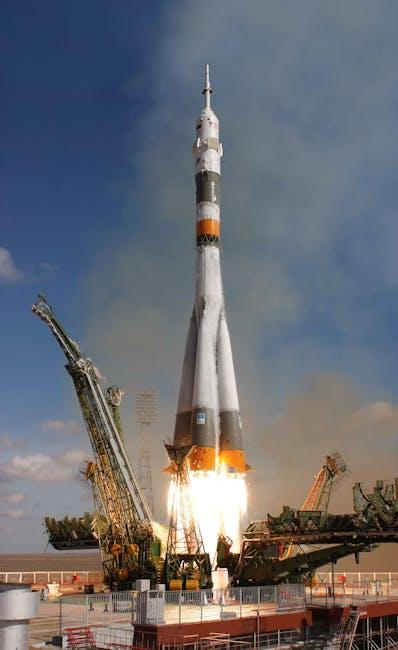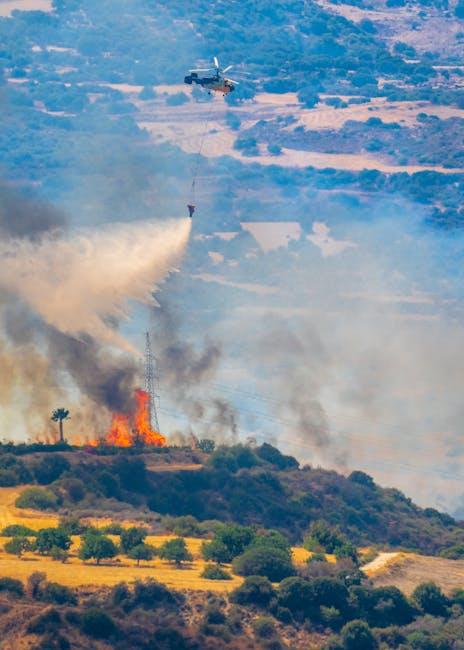



In a groundbreaking leap for environmental monitoring and disaster response, the launch of the first satellite for the FireSat constellation marks a pivotal moment in the intersection of technology and nature. This innovative network of satellites is poised to revolutionize how we detect and manage wildfires, leveraging the power of artificial intelligence to provide real-time insights and enhance our ability to respond to one of the most pressing challenges of our time. As we venture into this new era of space-based observation, the FireSat constellation stands as a testament to human ingenuity and a commitment to safeguarding our planet. Join us as we explore the significance of this momentous achievement and its potential to transform our understanding of wildfire dynamics.
The groundbreaking capabilities of FireSat are rooted in a fusion of state-of-the-art satellite technology and advanced artificial intelligence.Engineered to identify potential wildfire threats before they escalate, FireSat employs a network of high-resolution cameras and refined sensors. This satellite constellation utilizes AI algorithms that analyze vast amounts of data in real-time, allowing for rapid detection and assessment of environmental conditions conducive to fire outbreaks. Key features of this innovative technology include:
The collaboration between satellite operators and machine learning experts ensures that FireSat can discern patterns that might elude traditional monitoring. With its ability to cover expansive areas, the constellation can deploy a multi-spectral analysis, which enhances the detection of heat signatures and smoke variances from various geographical landscapes. This revolutionary approach heralds a new era in fire management, exemplified in the following summary table:
| feature | Description |
|---|---|
| Heat Detection | Identifies anomalies in temperature to locate potential hotspots. |
| Smoke Analysis | Recognizes smoke patterns that indicate active fires. |
| Geospatial Mapping | Creates detailed maps displaying fire risk zones. |

As the inaugural satellite of the FireSat constellation takes its place in orbit, its strategic importance becomes increasingly evident. This constellation, comprising a network of advanced satellites, is uniquely designed to harness the power of AI for proactive wildfire detection and management. By offering a real-time view of fire activity, these satellites will facilitate rapid responses to emerging threats, perhaps saving countless lives and protecting invaluable natural resources.
The operational capabilities of the FireSat constellation are further enhanced by the incorporation of cutting-edge technologies, creating a multifaceted approach to wildfire monitoring. Key features include:
Ultimately, the strategic deployment of the FireSat constellation marks a pivotal advancement in our capabilities to manage and mitigate wildfire risks, underscoring the critical intersection of technology and environmental stewardship.

The launch of the first satellite in the FireSat constellation marks a meaningful leap in our ability to manage wildfires and monitor environmental changes. By leveraging the power of artificial intelligence, this advanced network is poised to transform traditional fire management strategies. Key implications include:
moreover, the environmental monitoring capabilities provided by the FireSat satellites will contribute valuable insights into ecosystem health post-wildfire. Through a systematic approach to assessing vegetation recovery and soil erosion, managers can better understand the long-term impacts of wildfires on biodiversity. the potential benefits include:
| Benefit | Description |
|---|---|
| Restoration Planning | Guided strategies for reforesting areas affected by fire. |
| Water Quality Monitoring | Regular assessments of water sources impacted by post-fire runoff. |
| Biodiversity Tracking | Insights on the return of wildlife in rehabilitated areas. |

The triumphant launch of the first satellite in the firesat constellation marks a groundbreaking milestone in the realm of satellite technology and environmental monitoring. As the constellation continues to expand, it presents a multitude of opportunities for innovation and implementation.to fully harness the potential of AI in satellite systems,it’s crucial to invest in enhanced machine learning algorithms and data processing capabilities. This will not only improve the accuracy of fire detection but also foster timely responses to crises. Furthermore, collaboration among various sectors—including governmental agencies, research institutions, and tech companies—can expedite the development of reliable communication channels for real-time data sharing and analysis.
Going forward, stakeholders should prioritize the following recommendations to ensure the sustained growth and effectiveness of the FireSat initiative:
To better visualize the projected timeline for future satellite launches and developments, the following table outlines key milestones:
| Year | Milestone |
|---|---|
| 2024 | Launch of additional satellites in the FireSat constellation |
| 2025 | Implementation of advanced AI algorithms for real-time monitoring |
| 2026 | Launch of a global data-sharing platform |
| 2027 | Expansion of applications to include climate modeling |
the launch of the first satellite for the FireSat constellation marks a significant milestone in the integration of artificial intelligence with satellite technology. As we venture into this new frontier, the potential for enhanced wildfire monitoring and management is unprecedented. By leveraging AI capabilities, the FireSat network aims not only to provide real-time data but also to revolutionize our approach to environmental stewardship. As the constellation continues to expand, we look forward to witnessing how this innovative endeavor will transform our understanding of wildfires and empower communities around the globe to respond more effectively. The journey has just begun, but the promise it holds for safeguarding our planet from the threats of wildfires is already lighting the way forward.